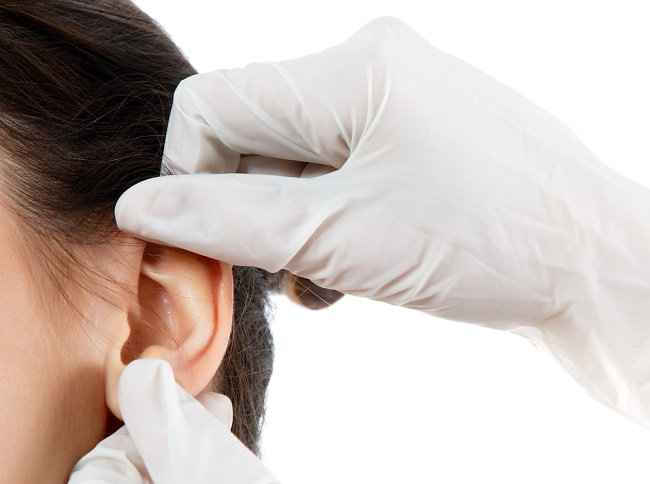There are several types of heart surgery that can be performed to correct various problems with the heart organs. Not only dealing with heart problems in order to function properly, heart surgery can also extend the life expectancy of people with heart problems.
Heart disease is claimed to be the most common cause of death in the world. According to the World Health Organization (WHO), the death rate from heart and blood vessel disease is estimated at 18 million cases in 2016.

This fact is not much different from what happened in Indonesia. Heart disease is the second leading cause of death in Indonesia after stroke. At least one in four deaths in Indonesia is caused by heart disease.
Conditions That Need to be Treated with Heart Surgery
Heart surgery can be done to repair damage and abnormalities in the heart, replace heart valves, install a pacemaker, to replace a damaged heart with a healthy heart.
The following are some types of heart disease that need to be treated with heart surgery:
- heart valve disease
- Arrhythmia
- Endocarditis
- Blockage of the arteries of the heart
- Coronary heart disease
- Heart failure
In addition, heart surgery procedures can also be performed on children to treat congenital heart disease, which is an abnormality in the structure and function of the heart from birth.
Different Types of Heart Surgery
The type of heart surgery performed depends on the disease suffered. The following are some types of heart surgery and heart disease that they can treat:
1. Operation bypass heart (CABG)
Operation bypass Cardiac arrest (CABG) is a surgical procedure to treat narrowing or blockage of the coronary arteries in patients with coronary heart disease.
This procedure involves grafting healthy blood vessels from other parts of the body into a blocked heart blood vessel.
These new blood vessels will then replace the function of the damaged heart blood vessels to deliver blood and oxygen to areas of the heart that are experiencing a lack of blood supply.
Thus, the symptoms of coronary heart disease, such as angina, and the risk of heart attack will be reduced.
2. Heart valve surgery
Heart valve surgery is a procedure performed to repair or replace damaged heart valves so that the heart can function normally again.
If the heart valve can be preserved, the doctor will repair the heart valve in several ways, such as closing the hole in the heart valve, reconnecting the separated heart valve, and strengthening the tissue around the heart valve.
However, if the heart valve cannot be repaired, the doctor will perform a heart valve replacement. The damaged heart valve can be replaced with a mechanical heart valve or a donor heart valve.
3. Coronary Angioplasty (PCI)
Coronary angioplasty is a type of heart surgery performed to open blockages or narrowing of the heart's blood vessels. This procedure involves inserting and inflating a special balloon over the blocked blood vessel to widen it.
Angioplasty is often combined with placement of a small wire tube (stent or ring) which aims to keep the blood vessels open and prevent them from narrowing again.
Even though it has the same purpose as surgery bypass, namely increasing the supply of blood and oxygen to the heart, angioplasty is not recommended for patients who have weak heart muscles, have diabetes, or have many heart blood vessels.
4. Cardiac Ablation
Cardiac ablation is a procedure performed to treat arrhythmias or heart rhythm disturbances. This procedure involves making an incision in the thigh or neck to place a catheter in the blood vessels leading to the heart.
At the end of the catheter there is an electrode that serves to destroy a small piece of heart tissue that causes heart rhythm disturbances. If left untreated, arrhythmias can lead to life-threatening complications.
5. Implanted pacemaker or ICD (Implantable Cardioverter Defibrillator)
Pacemaker (pacemaker) and ICD (implantable cardioverter defibrillator) is a tool used to treat arrhythmias and regulate heart rhythm. Although both are used to control heart rhythm, these two tools have differences.
Pacemakers can control abnormal heart rhythms by sending a low-powered electrical impulse to the heart. Thus, the heart can pump blood throughout the body optimally.
Meanwhile, the ICD can deliver a higher electrical current to the heart when a disturbance in the heart rhythm is detected. Therefore, the ICD is used in patients with arrhythmias who are at increased risk of sudden cardiac arrest.
6. Heart transplant
A heart transplant is a surgical procedure performed to replace a damaged heart with a heart from a healthy donor. This procedure is generally performed in patients with end-stage heart failure.
Although increasingly sophisticated and has a high success rate, heart transplant surgery also has risks, such as the body's reaction to the body's rejection of a new heart. However, this condition can be minimized by taking immunosuppressant drugs.
If done correctly, heart surgery can improve the quality and life chances of people with heart disease. In fact, heart surgery can extend the patient's life up to 10 years or more.
However, so that the results of heart surgery that you get are truly maximum, you still need to adopt a healthy lifestyle, such as eating a balanced nutritious diet, exercising regularly, and quitting smoking.
Heart disease will be easier to treat if detected early. Therefore, you are advised to consult a doctor if you feel symptoms of heart disease, such as palpitations, irregular heartbeat, and pain in the chest, neck, and back.









